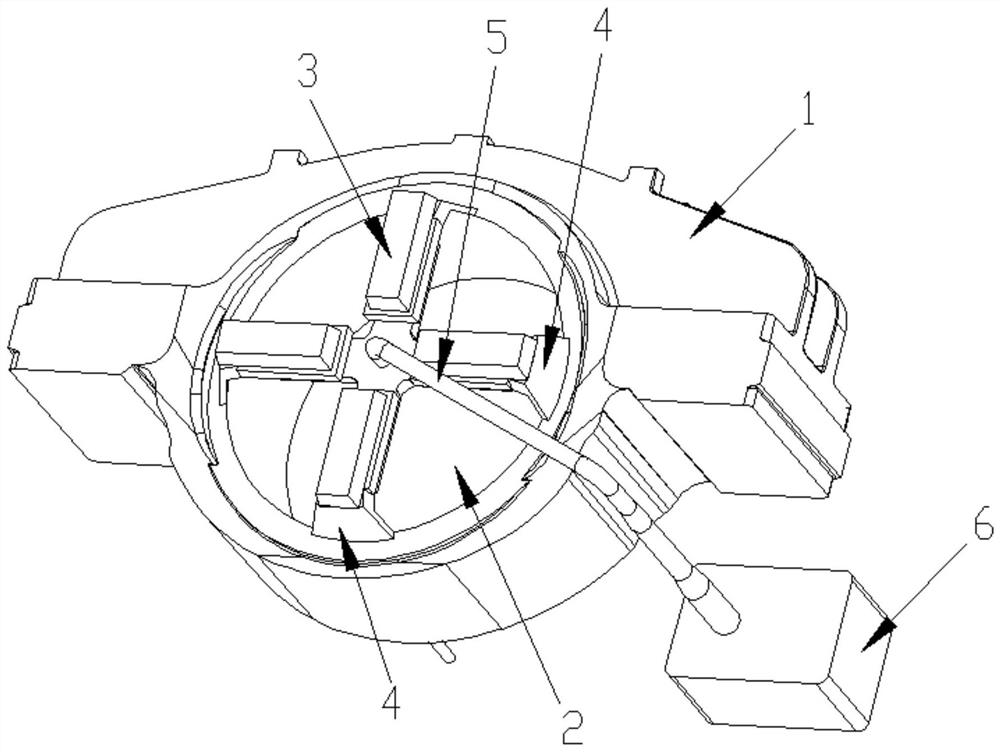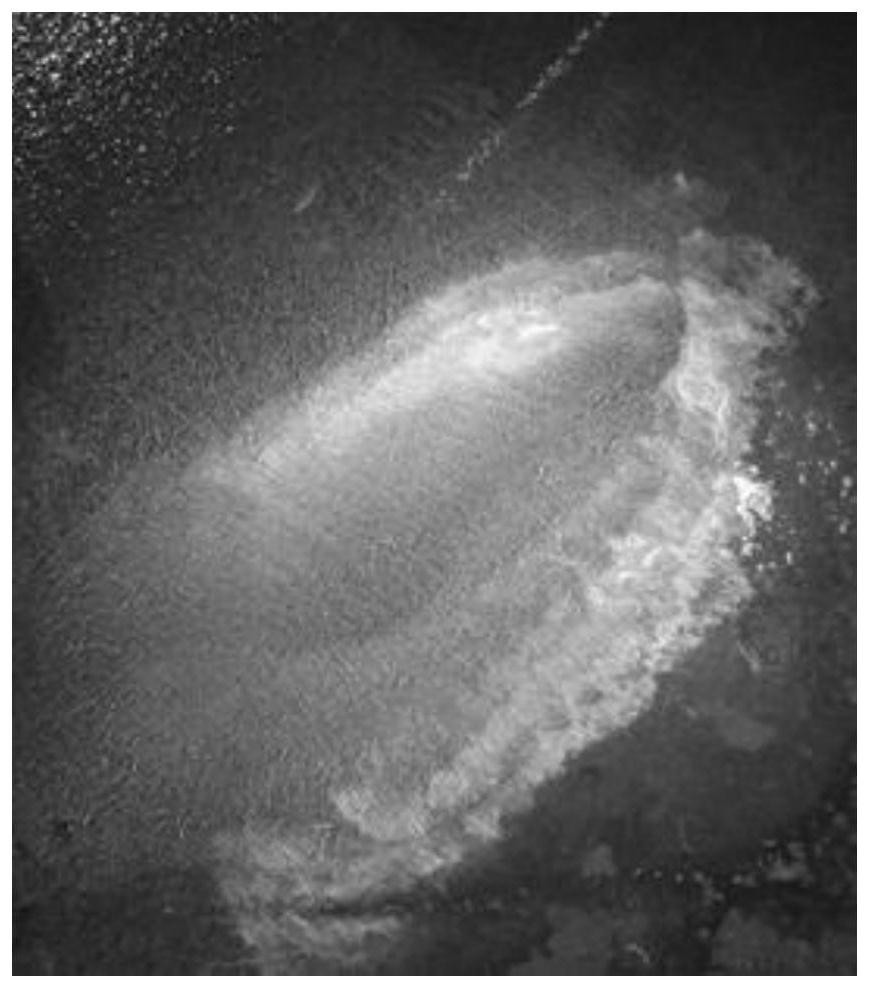Casting process of bearing seat
A processing technology and bearing seat technology, which is applied in the field of bearing seat casting processing technology, can solve the problems of high cost of wind power generation, high usage of ceramic tubes and chilled iron, and unreasonable ratio of raw materials, etc., to achieve favorable clamping The effect of slag floating up, reducing the amount of cold iron used, and no riser
- Summary
- Abstract
- Description
- Claims
- Application Information
AI Technical Summary
Problems solved by technology
Method used
Image
Examples
Embodiment 1
[0026] The present invention is a kind of bearing housing casting processing technology, including the following process steps:
[0027] S1: First heat and melt the smelting charge in an electric furnace until it reaches 1465°C and release it from the furnace; the smelting charge is composed of the following components by weight percentage: 40% pig iron, 49% scrap steel, 10% recycled material, and 1% recarburizer.
[0028] S2: During the process of molten iron coming out of the furnace, metal antimony with a concentration of 50 parts per million is washed into the ladle with the flow, and the molten iron is poured into the spheroidizing ladle after standing and slag removal;
[0029] S3: After the molten iron is injected into the spheroidizing ladle from the spheroidizing ladle mouth, it first enters the first pit of the spheroidizing ladle for refining, and then the molten iron floods the dam of the spheroidizing ladle and then enters the second and third pits of the spheroidi...
Embodiment 2
[0037] The difference from Example 1 is that the smelting charge is composed of the following components by weight percentage: 39% pig iron, 50% scrap steel, 10% returned charge, and 1% recarburizer. In the second pit and the third pit, 1.00% by weight of nodulizer, 0.1% by weight of inoculant and 0.4% by weight of covering agent are added;
[0038] The composition of molten iron before and after nodularization is as follows:
[0039] Raw water: C: 3.75; Si: 1.4; Mn: 0.13; P: 0.04; S: 0.007; Cr: 0.03; Cu: 0.05; Ni: 0.05; Ti: 0.03; Sn: 0.01;
[0040] Final water: C: 3.64; Si: 2.05; Mn: 0.13; P: 0.04; S: 0.01; Mg: 0.028; Cr: 0.03; Cu: 0.05; Ni: 0.05; Ti: 0.03; Sn: 0.01; ~0.006.
Embodiment 3
[0042] The difference from Example 1 is that the smelting charge is composed of the following components by weight percentage: 40% pig iron, 50% scrap steel, 9% returned charge, and 1% recarburizer. Both the second pit and the third pit are added with 1.00% by weight of nodulizer, 0.1% by weight of inoculant and 0.6% by weight of covering agent;
[0043] The composition of molten iron before and after nodularization is as follows:
[0044] Raw water: C: 3.80; Si: 1.5; Mn: 0.18; P: 0.04; S: 0.015; Cr: 0.03; Cu: 0.05; Ni: 0.05; Ti: 0.03; Sn: 0.01;
[0045] Final water: C: 3.66; Si: 2.15; Mn: 0.18; P: 0.04; S: 0.01; Mg: 0.038Cr: 0.03; Cu: 0.05; Ni: 0.05; Ti: 0.03;
[0046] The surface performance has been greatly improved. After the surface magnetic particle inspection, it was found that the thickest part of the surface defect (scum layer thickness) of the new process is about 2mm (the thickness of the original surface defect is about 5-10mm, such as figure 2 ),Such as image...
PUM
| Property | Measurement | Unit |
|---|---|---|
| thickness | aaaaa | aaaaa |
| thickness | aaaaa | aaaaa |
Abstract
Description
Claims
Application Information
 Login to View More
Login to View More - R&D
- Intellectual Property
- Life Sciences
- Materials
- Tech Scout
- Unparalleled Data Quality
- Higher Quality Content
- 60% Fewer Hallucinations
Browse by: Latest US Patents, China's latest patents, Technical Efficacy Thesaurus, Application Domain, Technology Topic, Popular Technical Reports.
© 2025 PatSnap. All rights reserved.Legal|Privacy policy|Modern Slavery Act Transparency Statement|Sitemap|About US| Contact US: help@patsnap.com



